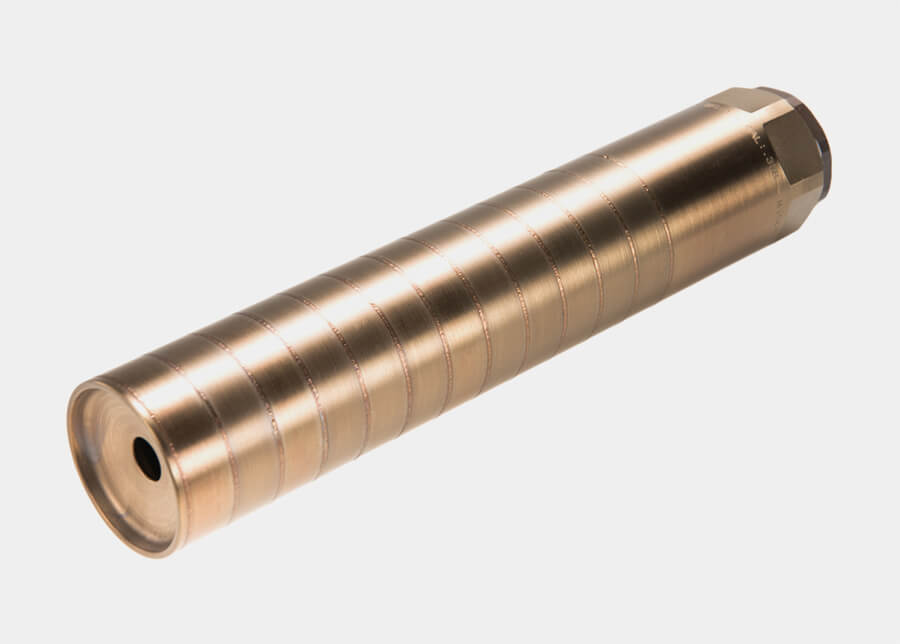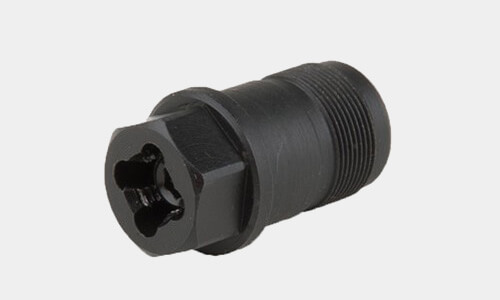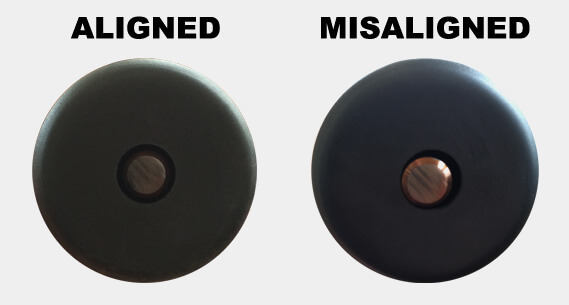How can you make one of the all-time coolest guns in history even cooler? By adding a suppressor, obviously! Now, you might be saying, Jeremy I rarely see suppressors on the M1A; why is that? I am glad you asked! In this article and video above I’ll be going over how exactly we accomplished this task, some benefits and some of the downsides.
First off, let’s understand how the M1A operates. The M1A line was never designed from the factory to be suppressed. The gas system is fixed and non-adjustable, and the muzzle threads — or lack thereof — are not standard 5/8×24, which is what is needed for most muzzle devices.

The M1A vents gas out of a port near the muzzle that faces downwards, bleeding off excess gas as the bullet leaves the barrel. The M1A was tuned specifically for reliability and accuracy, not adjustability. This is problematic for suppressors as they create a lot of back pressure. Rightly so, as they are slowing down the gasses leaving the barrel, which in turn suppresses the report of the round being fired.
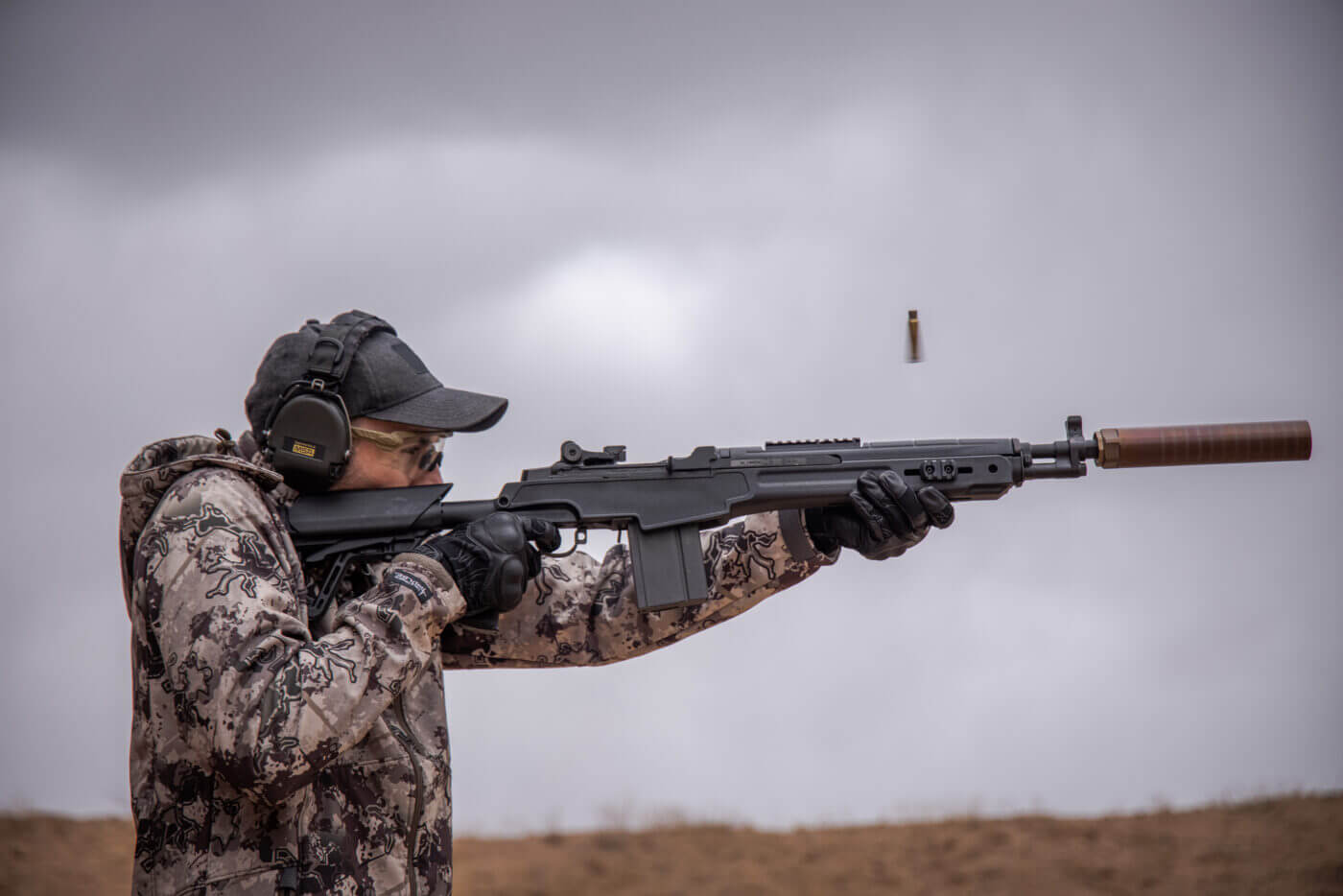
Taming the Beast
Now that we know our two hurdles, we can talk about the items I used to get this beast purring. The task of attaching the actual suppressor to the M1A was made quite simple by the fantastic people over at Delta P Design. They have created an extremely high-quality muzzle adapter for the family of M1A rifles.
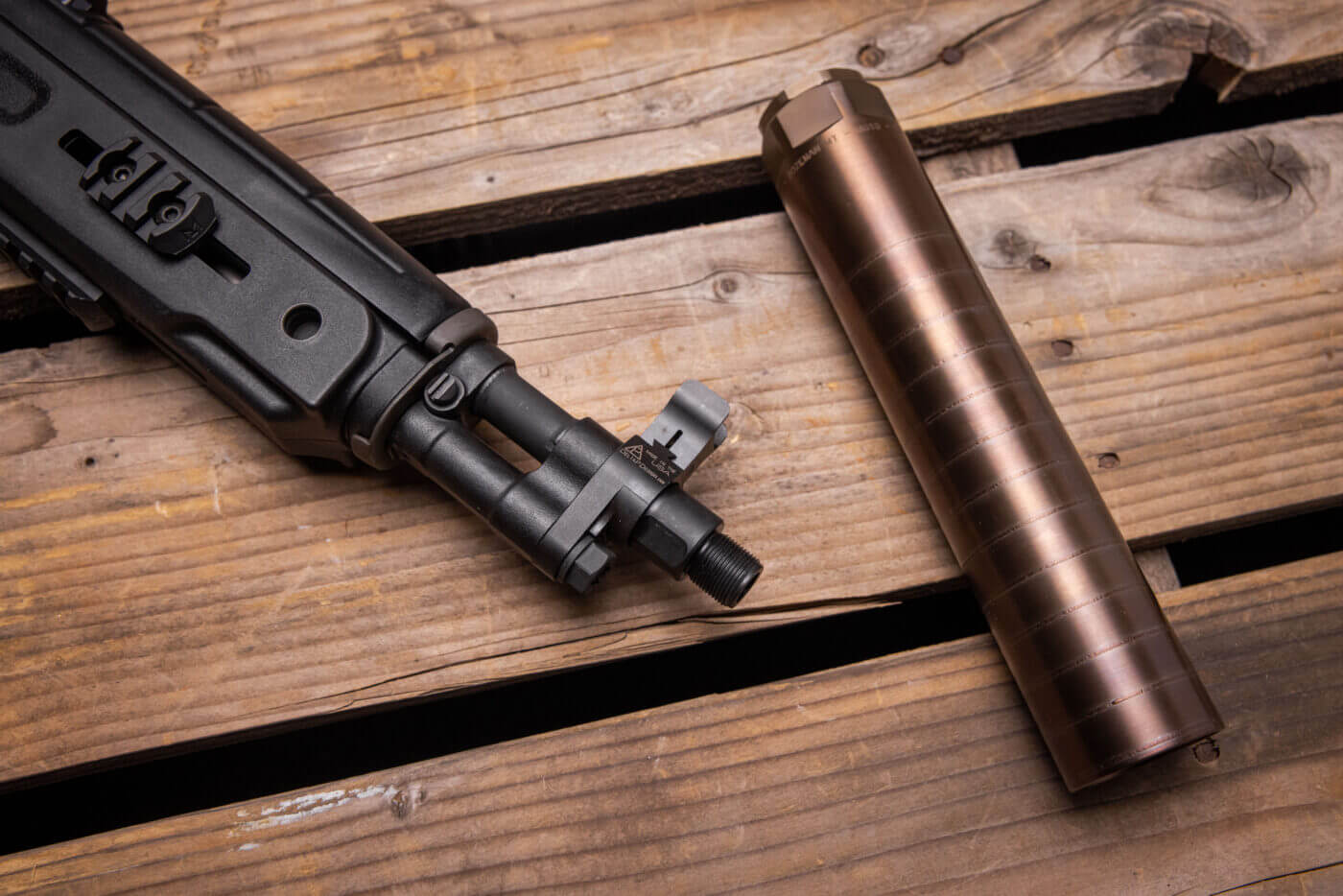
Their M1A SOCOM muzzle thread adapter uses two separate components and registers directly onto the barrel threads and thread shoulder, thus ensuring proper alignment. Once installed and aligned, a set screw positively retains the adapter. They are made in the USA from hardened billet material and are the real deal in my opinion.

Now that we can physically attach our suppressor, let’s talk about adjusting the gas system so that the rifle cycles reliably. For this task, I went with the Schuster Manufacturing SOCOM adjustable M1A Gas System. This replaces the factory gas plug, allowing the user to fine-tune the amount of pressure in your SOCOM M1A’s gas system. This is essential for suppressing the M1A.
Checking the Rig
Installing these items was an absolute breeze, and now we were ready to get to testing. For the suppressor, I chose the Rex Silentium MG10. This is a gorgeous tubeless design precision CNC machined from 100% 17-4p stainless steel, fully welded and then hardened to the max. The MG10 boasts a hardness of 45-47Rc and tensile strength of 190,000 psi. It’s safe to say this suppressor is well up to the task.
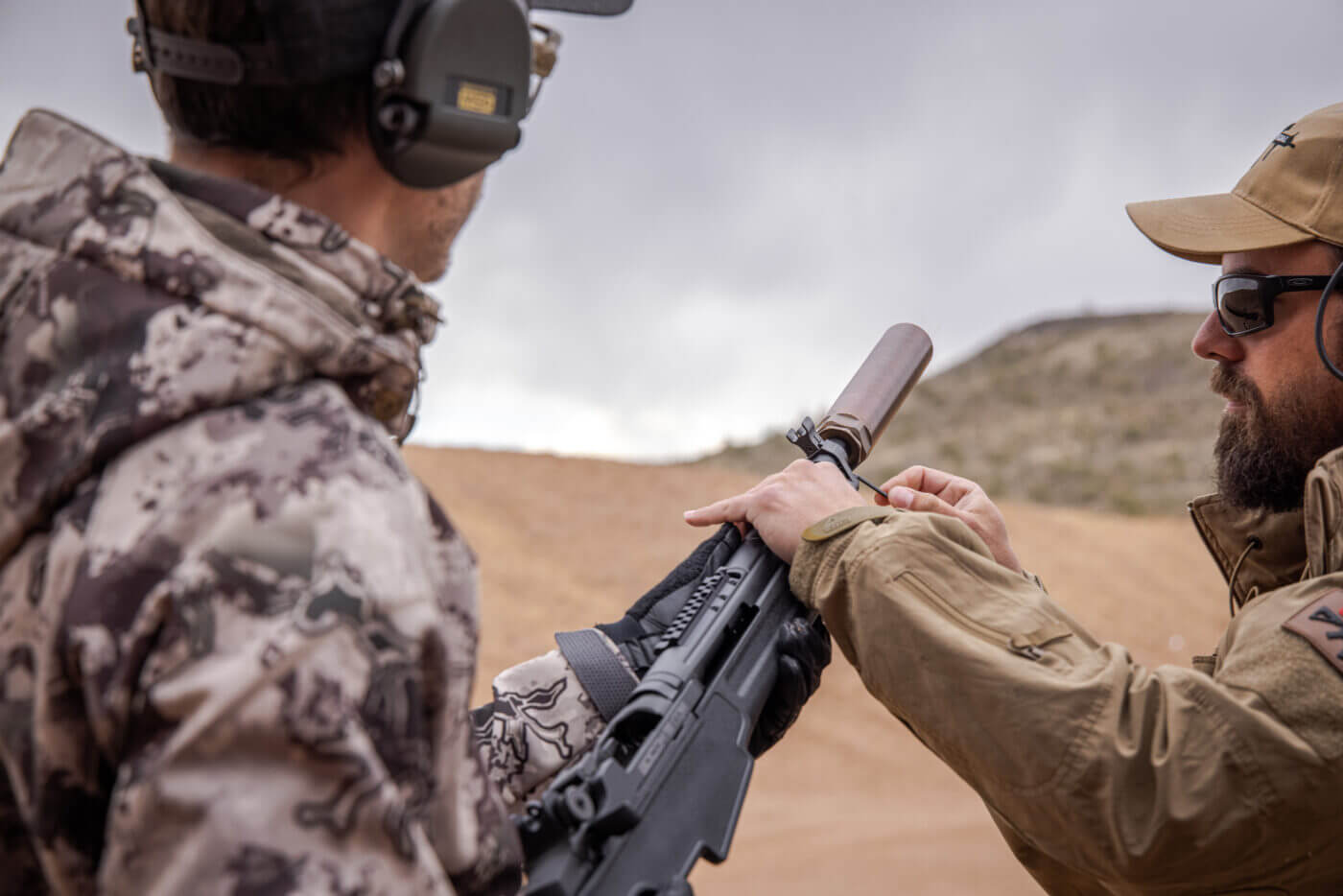
One important thing to note when suppressing any firearm is that it’s essential to check the bore alignment. To check bore alignment, you need a special rod designed for the specific caliber of that firearm. In our case, we used a Geissele 308 suppressor alignment gage. Make sure the firearm is clear and unloaded, and then thread your suppressor on and slide the alignment rod down into the barrel, making sure the rod is in the center with room to wiggle. If the rod is leaning too far to one side, that means your alignment is off and you may get a baffle strike that will ruin your very expensive NFA item.
In Practice
Now, onto the testing. The first few shots revealed that the gas was set too low. But as we easily adjusted the gas setting on the Schuster adjustable gas plug, the rifle started cycling perfectly. It really was quite simple putting everything together and getting it to run smoothly and reliably.
The only real downside on suppressing the M1A is, depending on your configuration, some gas to the face. The M1A is designed with an open top receiver, so that is where some of the extra gas vents. If you have an optic mount that goes over the top of the chamber, that should help. Also, dialing in your gas perfectly for specific rounds and suppressor you want to run should help as well.

Conclusion
Personally, I love to suppress as many of my firearms as I can. It’s just so much more pleasant and fun to shoot. If you are interested in suppressing your venerable M1A, I hope this article has given you a good idea on how to do so.
Editor’s Note: Please be sure to check out The Armory Life Forum, where you can comment about our daily articles, as well as just talk guns and gear. Click the “Go To Forum Thread” link below to jump in and discuss this article and much more!
Join the Discussion
Featured in this video
Continue Reading
Did you enjoy this video?

 130
130




